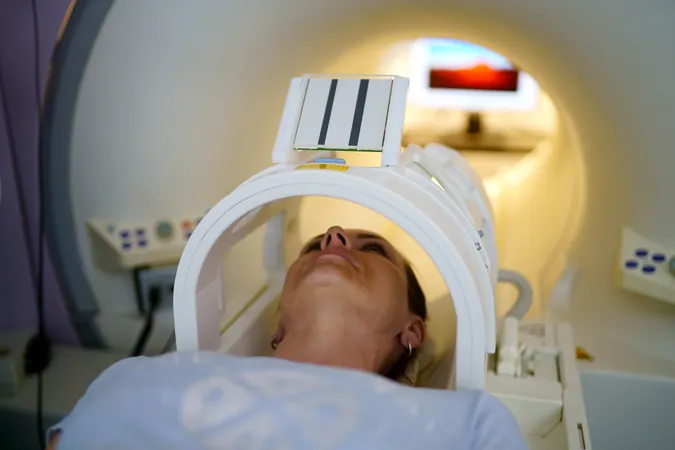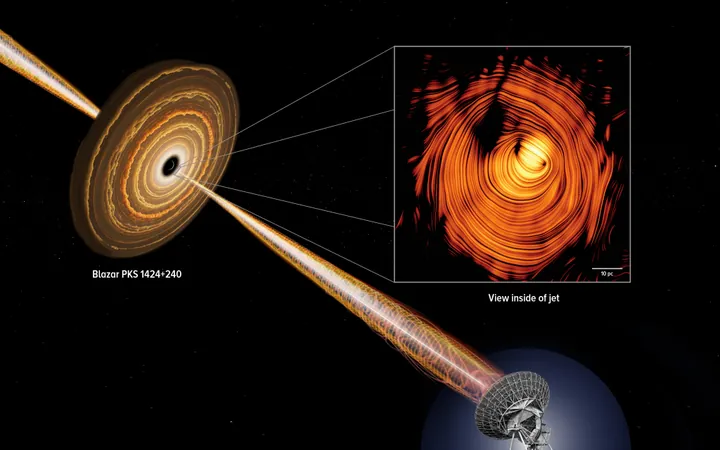
Revolutionary MRI Tool Predicts Dementia and Disease Risk with a Single Scan!
2025-07-01
Author: John Tan
Breakthrough in Aging Research
In an exciting development, researchers from Duke University, Harvard University, and the University of Otago have unveiled a groundbreaking tool that can evaluate the aging process using just one MRI scan of the brain. Named DunedinPACNI, this innovative noninvasive biomarker helps predict the risk of dementia, chronic diseases, and mortality in older adults.
Harnessing Data for Health Insights
The DunedinPACNI tool is based on extensive data from the Dunedin Study, which has monitored the health of 1,037 individuals born between 1972 and 1973 in New Zealand. Over almost two decades, participants underwent detailed assessments of various health indicators including blood pressure, cholesterol, and even dental health. This wealth of information allowed researchers to develop a Pace of Aging score for each individual.
Senior author Dr. Ahmad Hariri, a psychology and neuroscience professor at Duke, emphasized the significance of their findings: 22What’s really amazing is that we’ve tracked how quickly people are aging using midlife data, which aids in predicting dementia diagnoses much later in life.22
How It Works: The Power of MRI
Using structural T1-weighted MRI scans collected at age 45, the researchers trained DunedinPACNI to derive a comprehensive aging score purely from brain imaging. The tool was rigorously tested, utilizing over 50,000 brain scans from international datasets, including the Alzheimer's Disease Neuroimaging Initiative (ADNI) and the UK Biobank.
A Cutting-Edge Approach
What sets DunedinPACNI apart from other aging clocks is its foundation in individual health data collected over time, rather than snapshots of disparate individuals. Dr. Hariri pointed out that factors affecting perceived aging could stem from varying exposures like pollutants or smoking.
Staggering Predictions
When applied to older adults in the ADNI study, DunedinPACNI indicated a staggering 60% increase in the likelihood of developing dementia. Those with higher aging scores exhibited earlier cognitive decline and significant hippocampal atrophy. Moreover, the tool predicted an 18% greater chance of encountering chronic diseases and a 40% elevated risk of mortality, even among participants who appeared to be in good health.
A Tool for Global Health
Interestingly, the research found that DunedinPACNI remained effective across diverse demographics, including low-income and non-White groups in the U.K. and Latin American adults. This hints at a universal applicability, reflecting aging processes common to all populations.
Future Implications for Aging Studies
Building on earlier research that produced DunedinPACE based on DNA methylation, DunedinPACNI opens new avenues. Unlike its predecessor, which relies on genetic data, this new tool is applicable to existing MRI scans, making it a formidable asset in global brain health studies.
The researchers note that identifying broad risk markers for various age-related diseases earlier in life could provide significant benefits for interventions. Moreover, DunedinPACNI could serve as a surrogate endpoint in clinical trials for anti-aging therapies, offering a quicker method to assess treatment efficacy without the long wait for disease outcomes.
Looking Ahead
While the study's findings are promising, the authors acknowledge limitations stemming from a majority of data being derived from individuals of European descent, stressing the need for more diverse neuroimaging research. They aim to enhance DunedinPACNI's accuracy through additional imaging methods and establish standard norms for clinical applications.
As the scientific community continues to unlock the mysteries of aging, tools like DunedinPACNI could revolutionize how we understand and combat age-related health issues.



 Brasil (PT)
Brasil (PT)
 Canada (EN)
Canada (EN)
 Chile (ES)
Chile (ES)
 Česko (CS)
Česko (CS)
 대한민국 (KO)
대한민국 (KO)
 España (ES)
España (ES)
 France (FR)
France (FR)
 Hong Kong (EN)
Hong Kong (EN)
 Italia (IT)
Italia (IT)
 日本 (JA)
日本 (JA)
 Magyarország (HU)
Magyarország (HU)
 Norge (NO)
Norge (NO)
 Polska (PL)
Polska (PL)
 Schweiz (DE)
Schweiz (DE)
 Singapore (EN)
Singapore (EN)
 Sverige (SV)
Sverige (SV)
 Suomi (FI)
Suomi (FI)
 Türkiye (TR)
Türkiye (TR)
 الإمارات العربية المتحدة (AR)
الإمارات العربية المتحدة (AR)